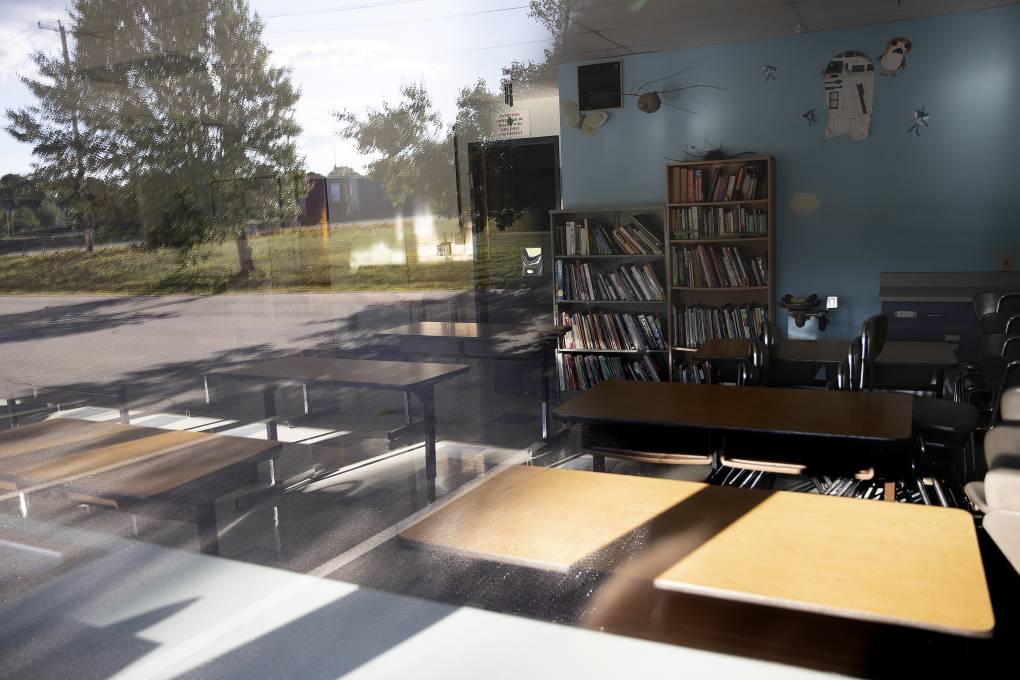Then, in December, Stanford researchers with the National Student Support Accelerator released an academic paper with more details about the heralded boost to attendance in Washington. Lee and her research team analyzed tutoring schedules for more than 4,000 of the students and calculated that a student was 7 percent less likely to be absent from school on a day when tutoring was on the schedule, compared with a day when tutoring was not on the schedule. The researchers thought that perhaps students felt like they were learning in these sessions, or enjoyed the personal attention, and looked forward to them.
Tutoring schedules ranged from once a week to daily. A student scheduled to receive tutoring three times a week, the recommended minimum for effective catch-up tutoring, would attend a total of 1.3 more days of school, on average, over a 180-day school year.
“That feels minimal, just a day or so,” Lee admitted. But she said it was “encouraging to move the needle at all,” with this group of economically disadvantaged students. More than 80 percent of the tutored students were Black. The remainder were largely Hispanic.
What struck me was the high average absenteeism rate among the thousands of students selected for tutoring: 17 percent. In other words, these students had missed more than 30 days, not including weekends. A large subset of them – one out of six – were considered to be “extremely absent,” missing more than 30 percent of the school year. That’s about 60 school days. “They’re missing school at an alarming rate,” said Lee.
No wonder these children and teens are so far behind. And no wonder Washington’s leaders wanted tutors for these kids, who were at risk of falling further behind and ultimately becoming dropouts.
I contacted Hedy Chang, the executive director of Attendance Works, an organization that works with schools to boost attendance, to ask how significant one additional day of school could be for chronically absent students. She said working with kids who are missing 30 days of school is important. “I am a bit concerned that this small change (1.3), while promising, might not be enough to make a difference,” she said in an email.
Chang consulted with her research team and they found a bright spot: small gains can add up across a school. For one student, 1.3 days is small, Chang explained. But across 100 students, that’s 130 more days. “It could be a movement towards more stability in classrooms,” Chang said.
Averages mask big differences. Some students’ attendance increased by a lot more. Middle school students were the most likely to attend school on a tutoring day, translating to 2.1 additional days of school for a student who was scheduled three times a week. High school students were the least likely to be motivated to attend school. Their attendance wasn’t much different between days with and without tutoring. Tutoring scheduled during the school day was more of a motivator to show up than tutoring scheduled after school. Smaller tutor-to-student ratios of 1-to-1 or 1-to-2 were more effective in reducing absenteeism than larger tutoring groups of three or four students. (All of the tutoring was in-person, not online.)
Much of what schools actually try in education is rarely studied and analyzed rigorously. Research like this helps school leaders reflect on what works and what doesn’t. Washington deserves credit for trying tutoring, which had shown strong benefits in hundreds of earlier, albeit smaller studies, and for opening its doors to researchers to study its big rollout.
It didn’t work as well as hoped for a variety of reasons. Some of the tutoring wasn’t scheduled as often as the research advised, or during the school day when attendance is highest. But the critical lesson we learn from this analysis is that some students may be too disengaged from school to take advantage of even well-designed tutoring programs. It’s useless to hire tutors for students who don’t show up.
The Stanford study makes the argument that tutoring itself helps to re-engage kids in school and that any improvement in attendance is worthwhile. But I question the economic value when the benefit is so tiny.
I don’t envy school leaders. They are dealing with masses of disengaged students and we don’t have good solutions for them.

